No products in the cart.
May 28, 2025
We’re travelling in the first half of May – the beaches and alleys are still almost empty. The evenings are cool, and the first few nights bring rain. But each morning, nature feels lush, the world freshly washed, and the early Mediterranean sun bathes everything in warm tones.
The light on the Costa Brava has a magic of its own. Every hour changes the palette of sky and sea – in the morning, everything glows with soft gold; at midday, it turns a brilliant blue; by evening, the rocks burn with shifting shades of red. I catch myself mentally noting colour nuances: the shamelessly deep turquoise of a hidden cove, the glaring white of the houses in Cadaqués, the delicate pastel pink of dusk.
On our first morning, before breakfast, we head straight to the beach. The day before had been long – we’d explored the area around our accommodation, nestled in a fragrant pine grove, and spent the evening on the terrace. But then tiredness took over. Now, as soon as we wake, we’re drawn to the edge of the Mediterranean, to Platja del Racó. The morning light whispers softly in the surf. The sky, the sea, the slightly pebbly sand – everything lies in pastel shades. The water is icy, but we can’t resist: barefoot through the wet sand, letting the waves wash over our toes – a first arrival at the edge of vastness.
It’s not just the light – the sea itself, this endless, rolling mirror, shifts from hour to hour, from second to second. No painter could make it more varied: turquoise, jade green, steel blue, violet grey. On some beaches, the water is so clear we can see every pebble, every movement of a starfish. In small coves it gleams like glass, while near the rocks, spray flies up and the sea churns in deep blues and greys. Where the surf is stronger, stirred-up sediment clouds the water in murky browns. No two days are the same.
The Costa Brava can do it all: gentle and soft, wild and untamed, translucent and tender or full of force. It’s my first time here – and I fall for it instantly. For its changeability, its play of colour and mood. The sea finds a new language every day.
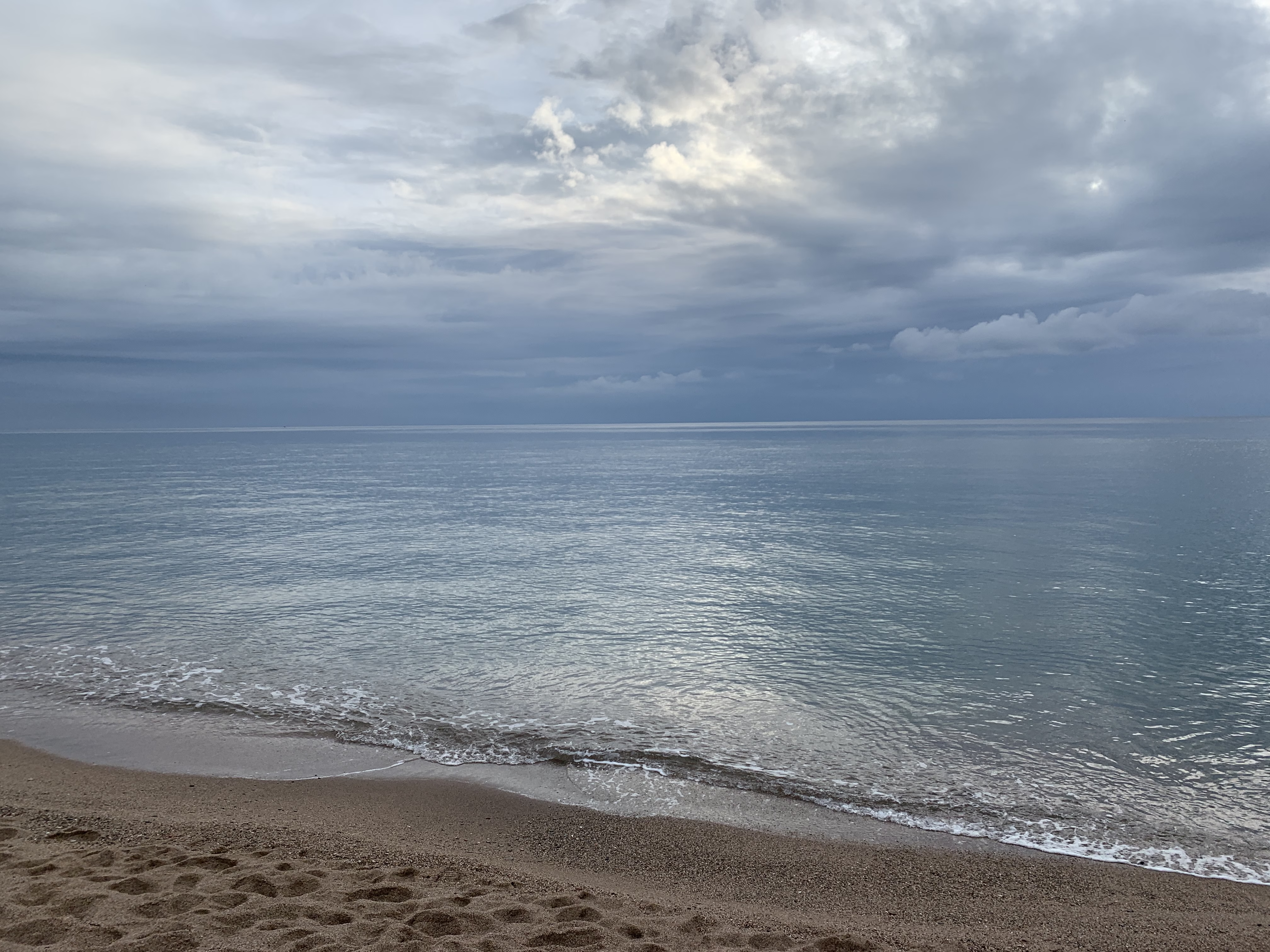
Back at our accommodation, we start the day with breakfast and make loose plans. This holiday is meant to bring rest and inspiration – not a sightseeing marathon. So we decide each day anew what we feel like doing, depending on mood and weather.
Today, we’re drawn to Pals. The medieval village, built from honey-coloured sandstone, rises on a hill that can be seen from afar. We wander through archways and across ancient cobblestones; I feel as if I’ve stepped into another time. Every corner seems to have looked exactly like this for centuries.
Later I learn that the old town had to be rebuilt. After the Spanish Civil War (1936–1939), Pals was in a terrible state. The war had shaken Spain to the core – economically, socially, and structurally. Under Franco’s dictatorship, many regions suffered not only from political stagnation but also from deep poverty (so much, by the way, for the economic competence of authoritarians).
During that time, the medieval centre of Pals fells increasingly into disrepair. People moved away, and those who stayed – or had no choice but to stay – focused on sheer survival. Many historic buildings stood empty, the village decayed, and its significance faded.
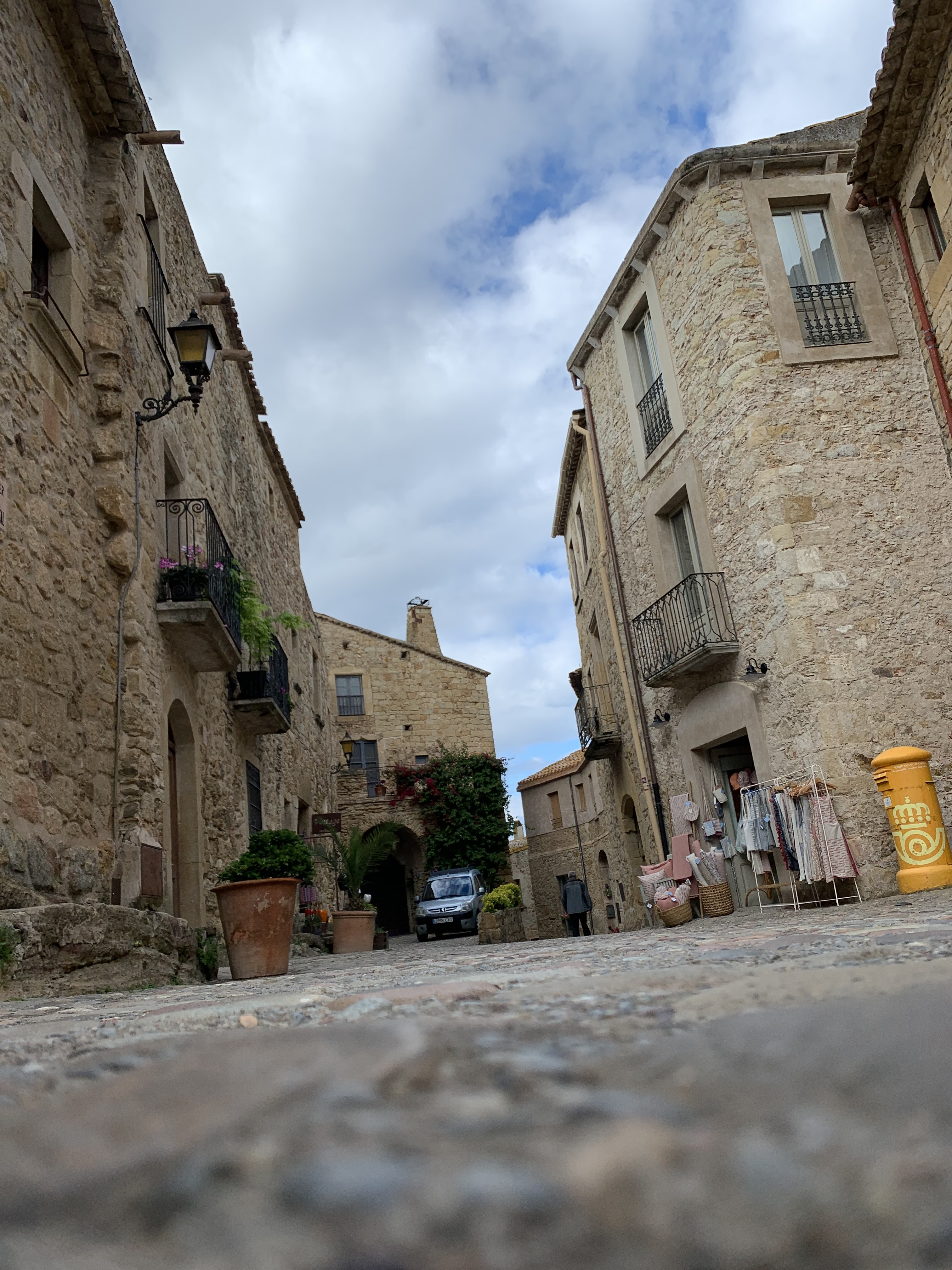
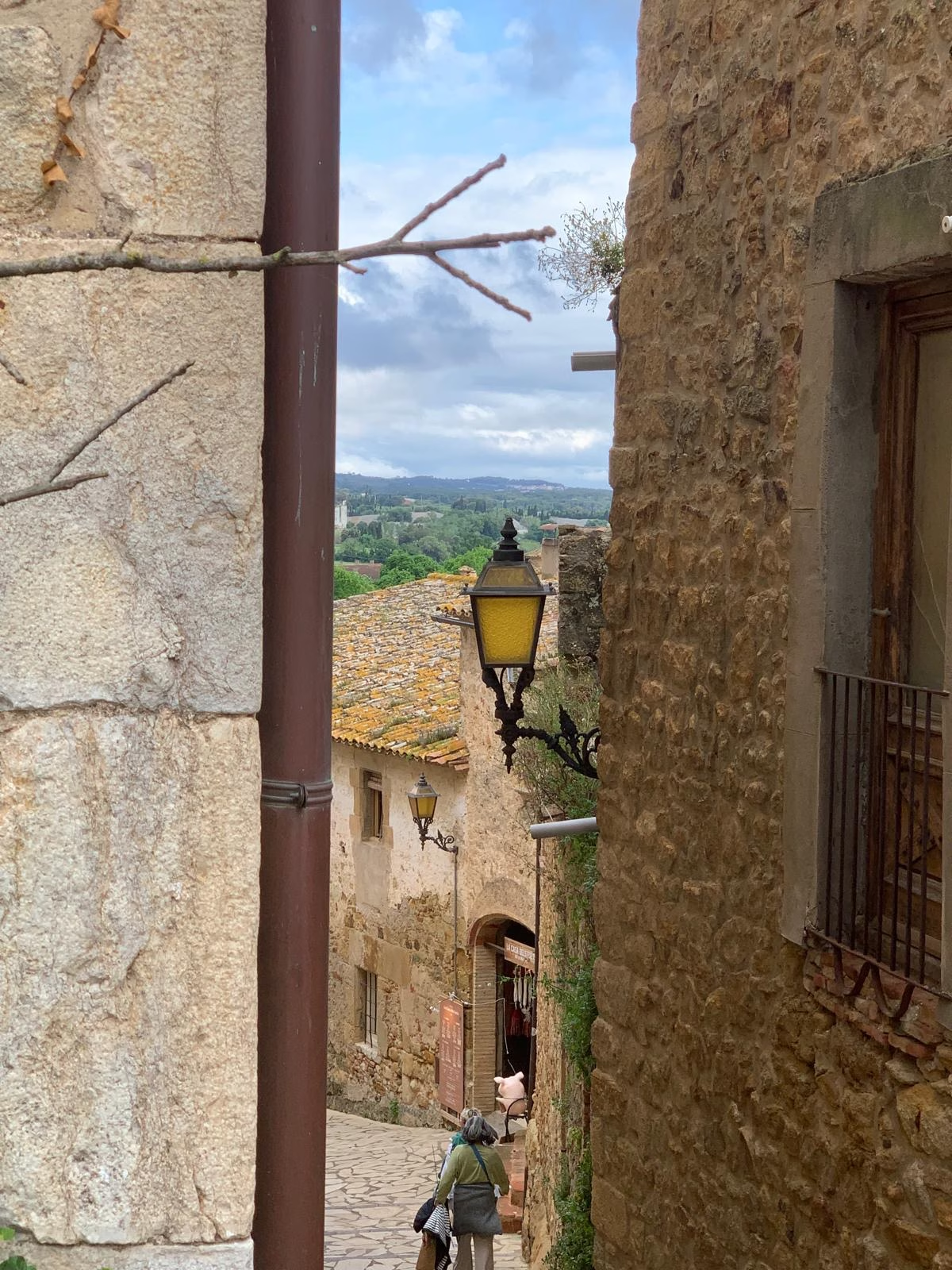
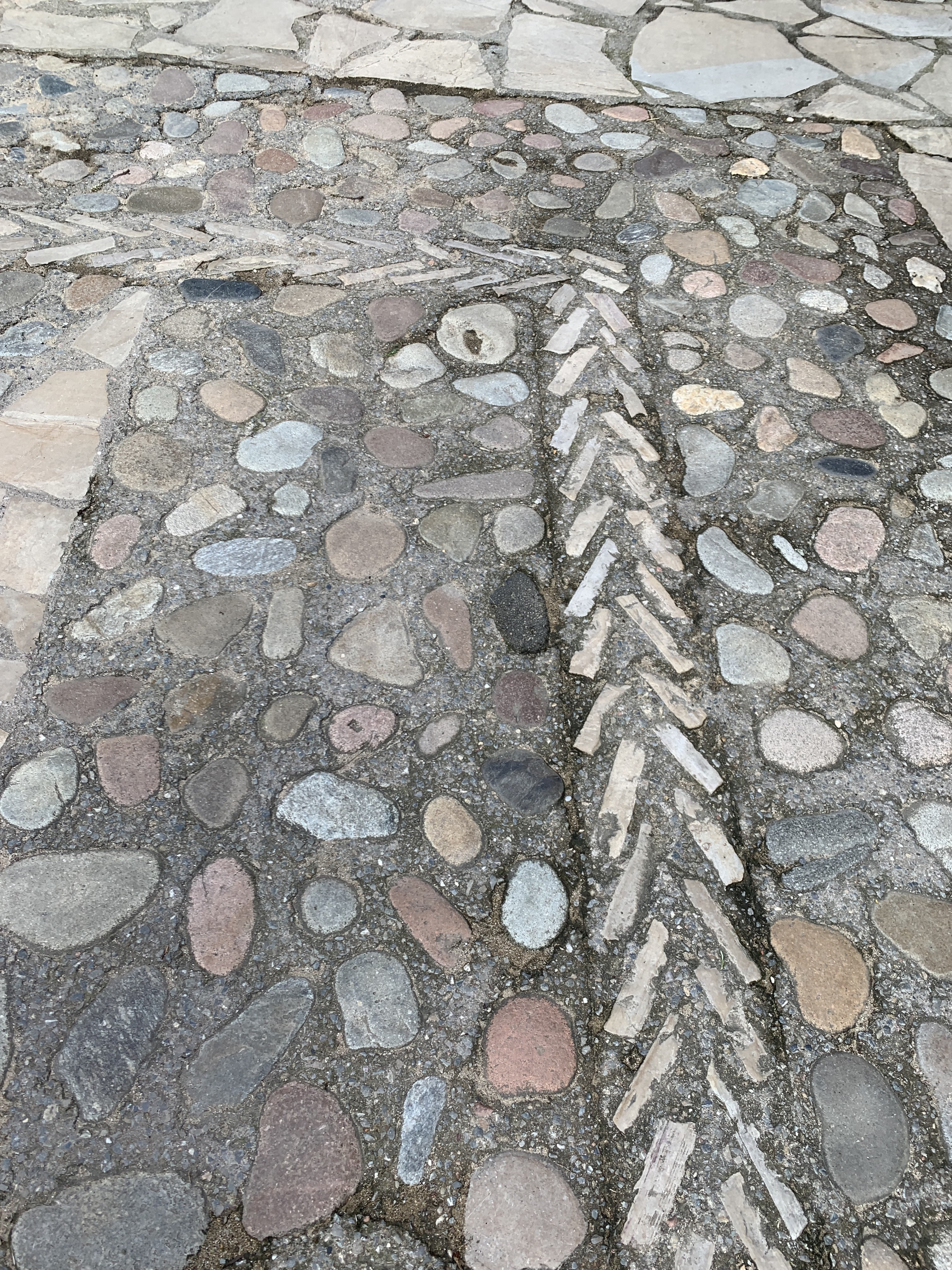
From the 1950s onwards, Dr Pere Servià i Cantó, the village doctor at the time, began advocating passionately for the preservation of Pals’ historic centre. Through personal commitment, public appeals and quiet persuasion, he managed to have the old town placed under heritage protection – a rare achievement under Franco’s regime. Pals was gradually restored. Today, it’s considered one of the most beautiful medieval villages in Catalonia – all because one doctor refused to give up on his home.
We visit the village church. It’s not grand or richly adorned like so many others – no golden altars, no elaborate frescoes. And yet, it moves me in a way I didn’t expect. As someone who’s not religious, I usually enter churches for the art, the architecture, the history. But here, it’s something else: the nave is plain and slightly low, yet the multi-ribbed vault above the choir is unexpectedly refined. The centuries-darkened sandstone gives off a quiet warmth. The space carries a sense of community, of shelter.
As we explore the interior, we suddenly hear Gregorian chants somewhere in the background. Deep, resonant voices fill the room. It’s a special, completely unexpected moment.
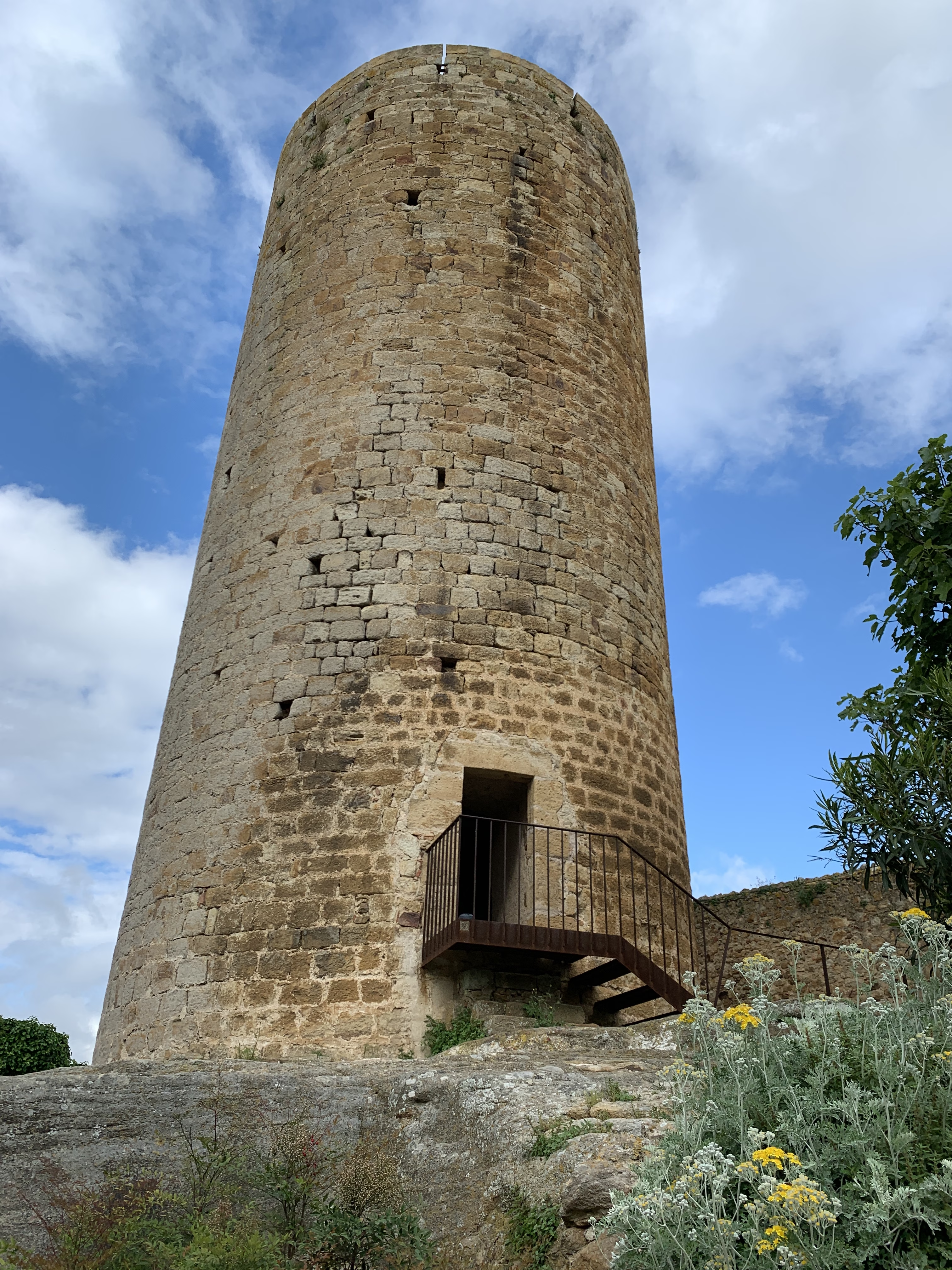
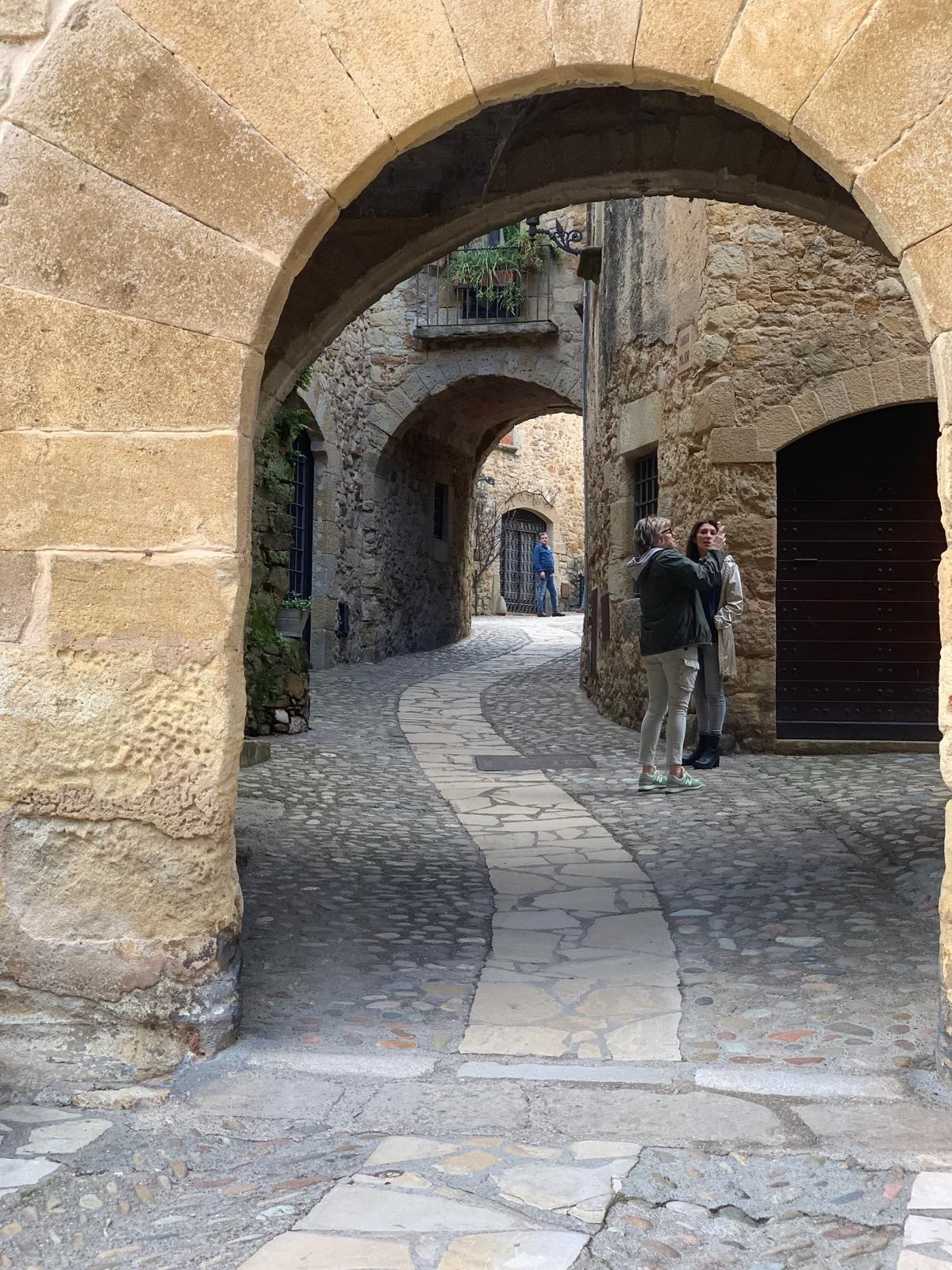

Oleander blooms between the walls as we drift through the village, climbing narrow lanes, briefly losing our sense of direction. We stop in at one or two souvenir shops – not the usual shelves of cheap trinkets, but curious little places that draw us in. Inside, it feels as if we’ve stepped into a cave. The walls seem carved out of the rock itself – uneven, cool, with stone niches and shallow vaults. Some of the old buildings here were in fact built onto the natural rock – or even into it. Originally, they were likely used as storage rooms or wine cellars. Today, they hold handmade ceramics, colourful bowls, small works of art.
I find myself wondering how many hands have touched these stones. How many feet have crossed these uneven floors. And how much patience it must have taken to save this place from falling into ruin. The connection between past and present is tangible – in the walls. In the light.
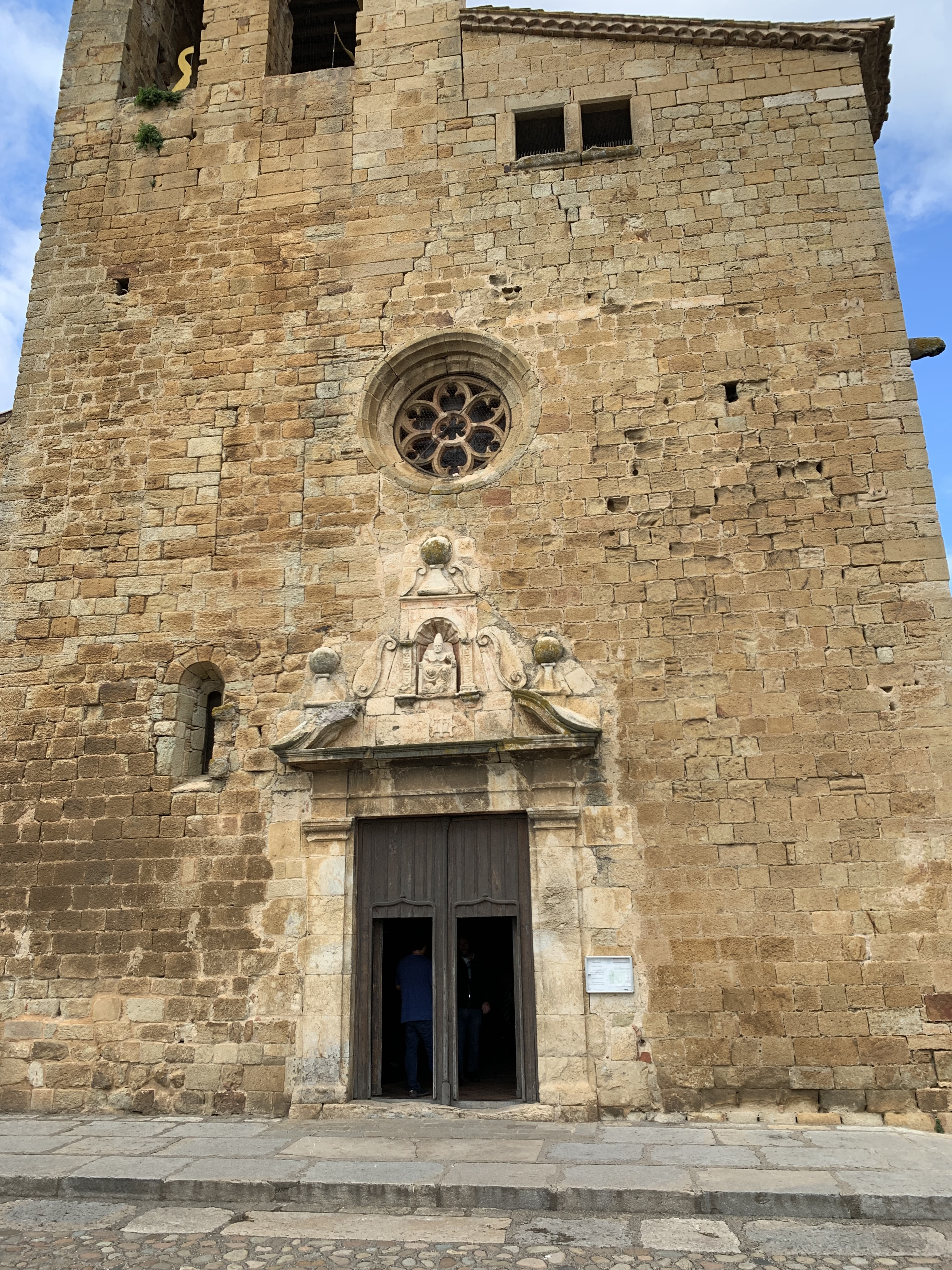
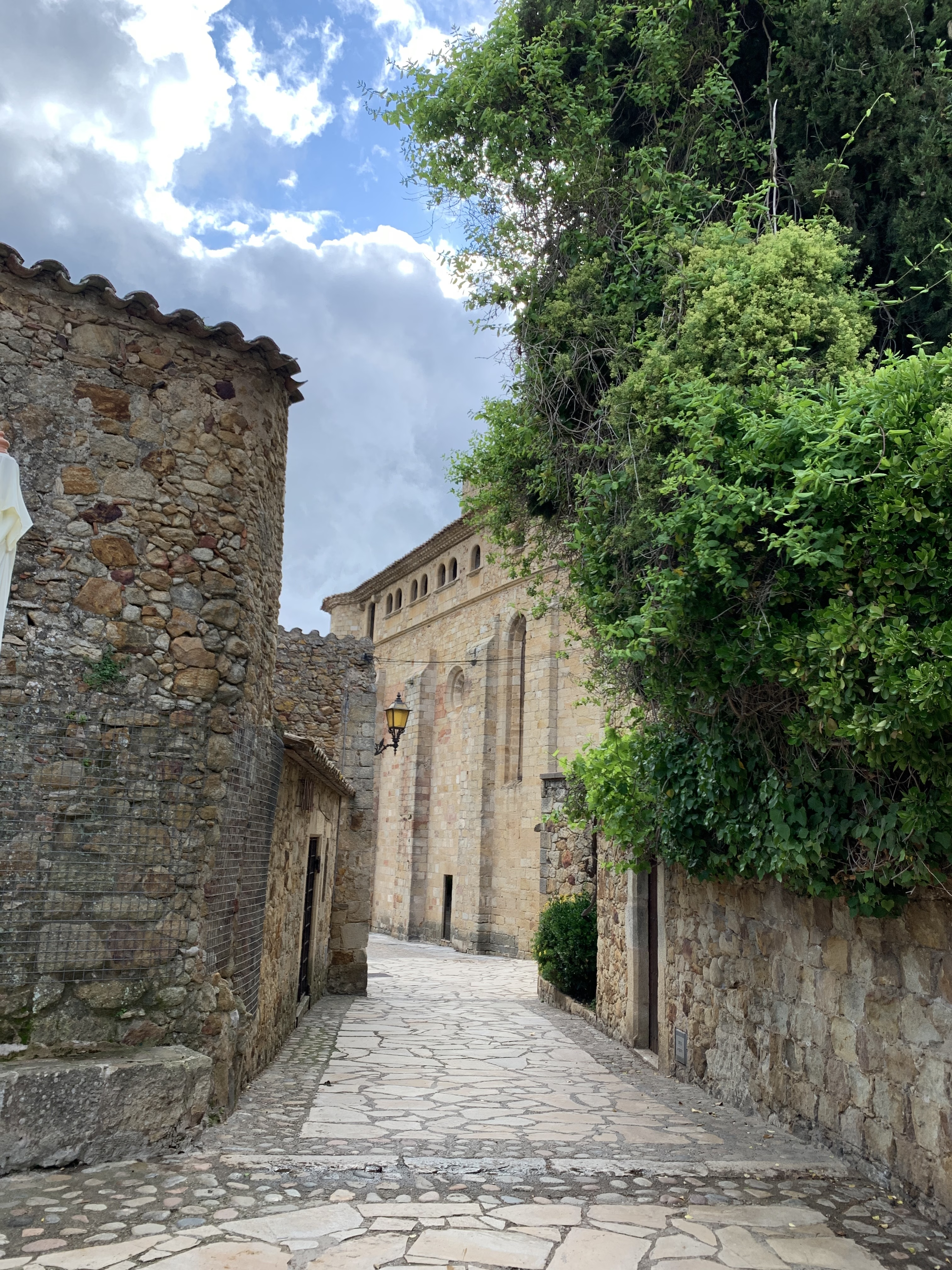

The next day, Girona is celebrating the Temps de Flors – a famous flower festival that takes place every May and transforms the old town into a sea of blooms. Everywhere – on staircases, in courtyards, along the medieval walls – elaborate floral arrangements are on display. The scent of countless blossoms mingles with the atmosphere of the centuries-old alleys, turning this venerable city into a fragrant, temporary work of art.
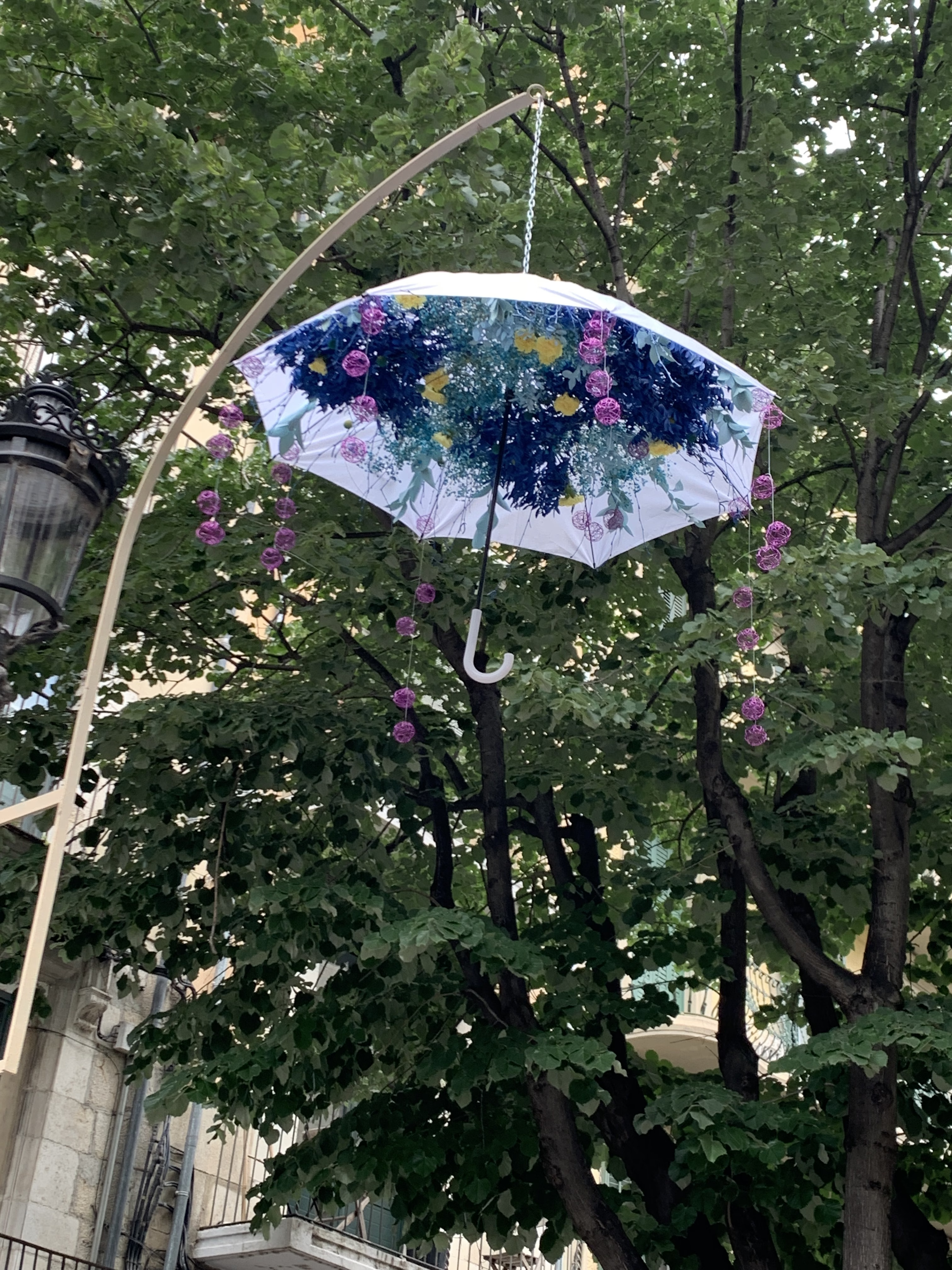
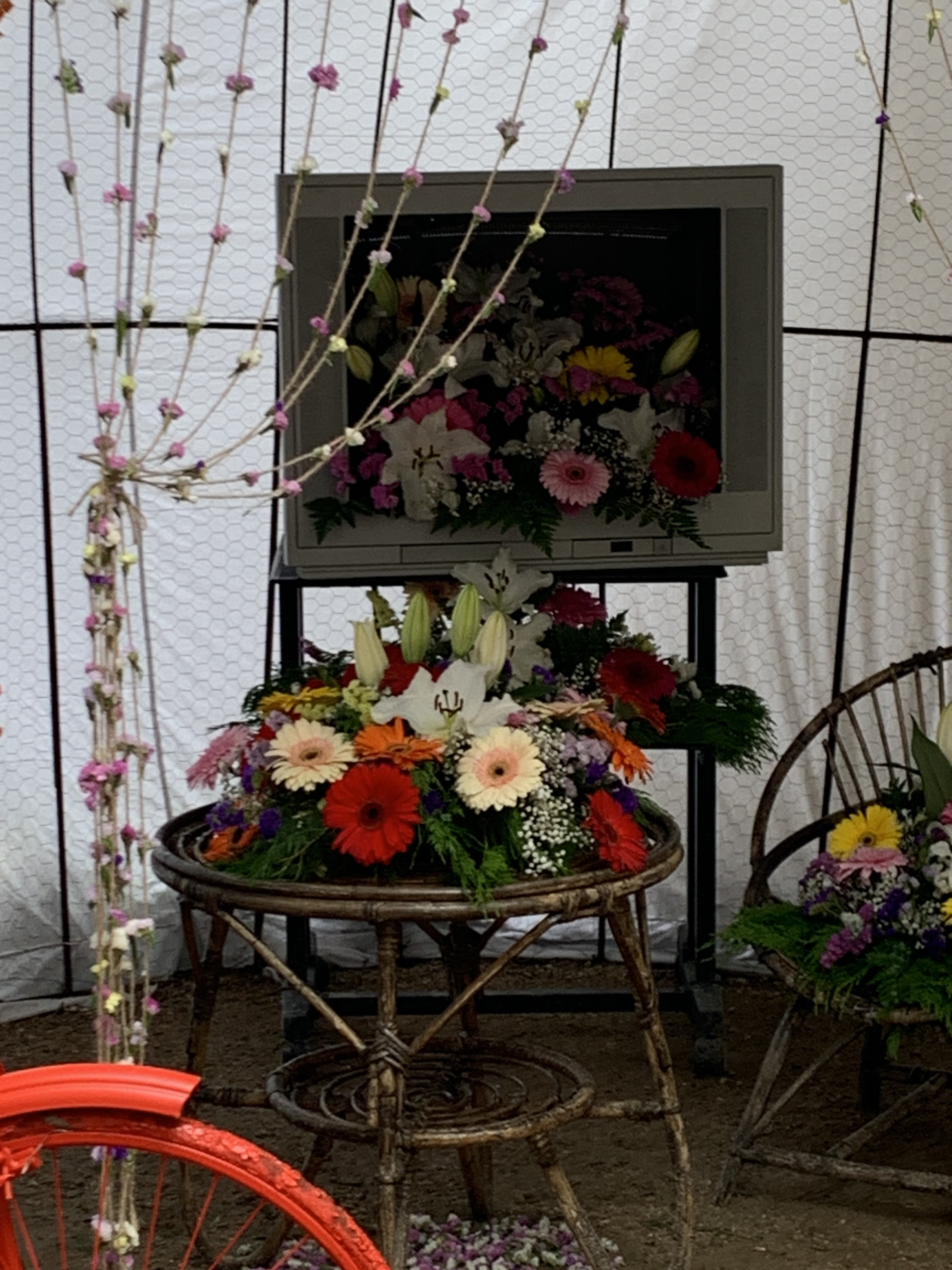
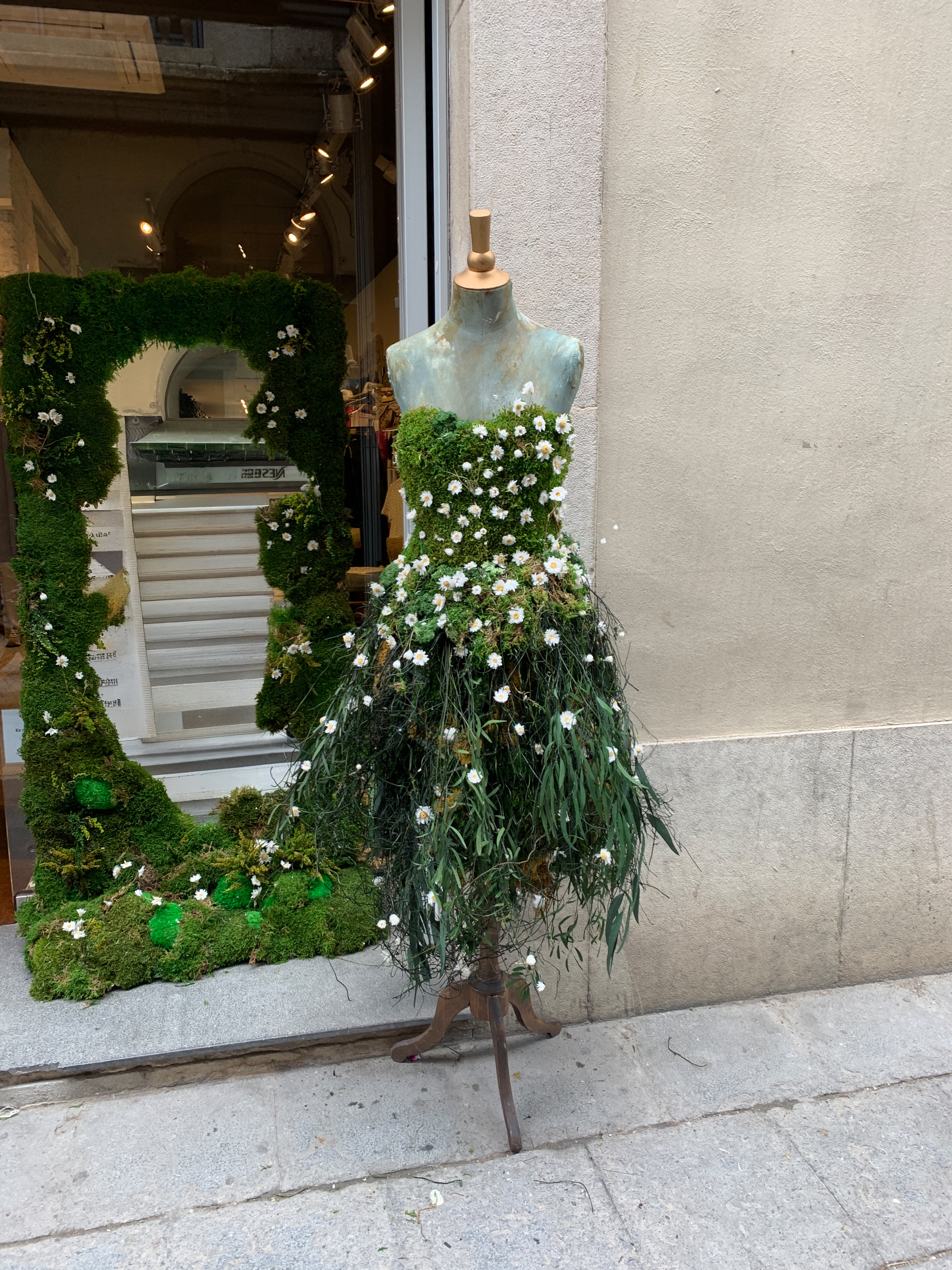

In early May, the Costa Brava still feels half-asleep in its off-season quiet. But Girona is different. The city greets us at a very different pace: fuller, denser, louder.
The old town is packed. People squeeze through the narrow streets shoulder to shoulder. For me, it’s hard to bear – I feel my body tense, my breath quicken. Again and again, I brush up against the edge of panic. Thankfully, I’m not alone. My loved ones stay close with understanding and care – and that makes all the difference.
Looking back, visiting Girona during the flower festival might not have been the best idea. The floral arrangements are beautiful, no doubt. Some are playful, some impressive, some unexpected. And yet: I would have preferred to see the city without the crowds. With more space. More air.
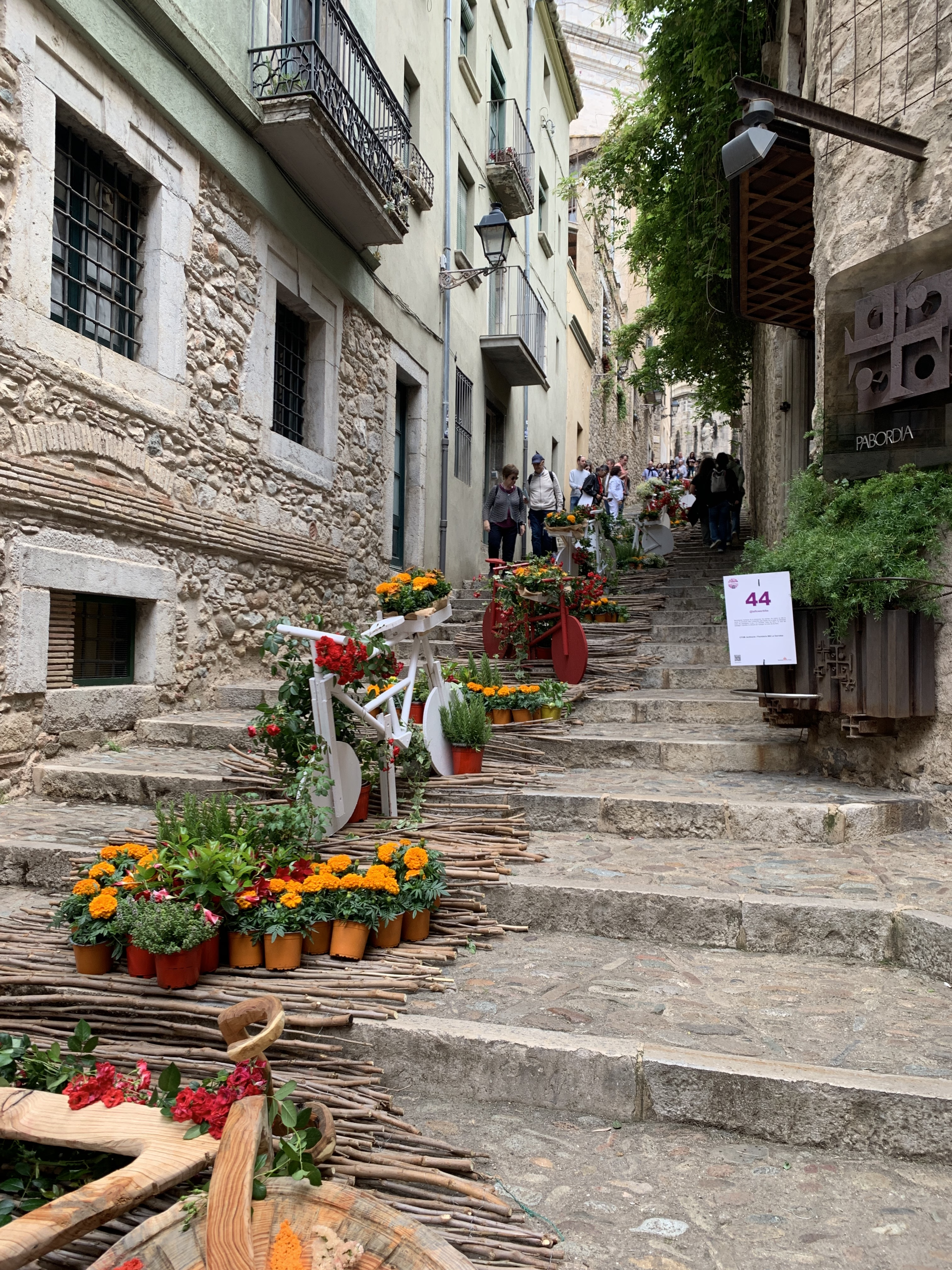

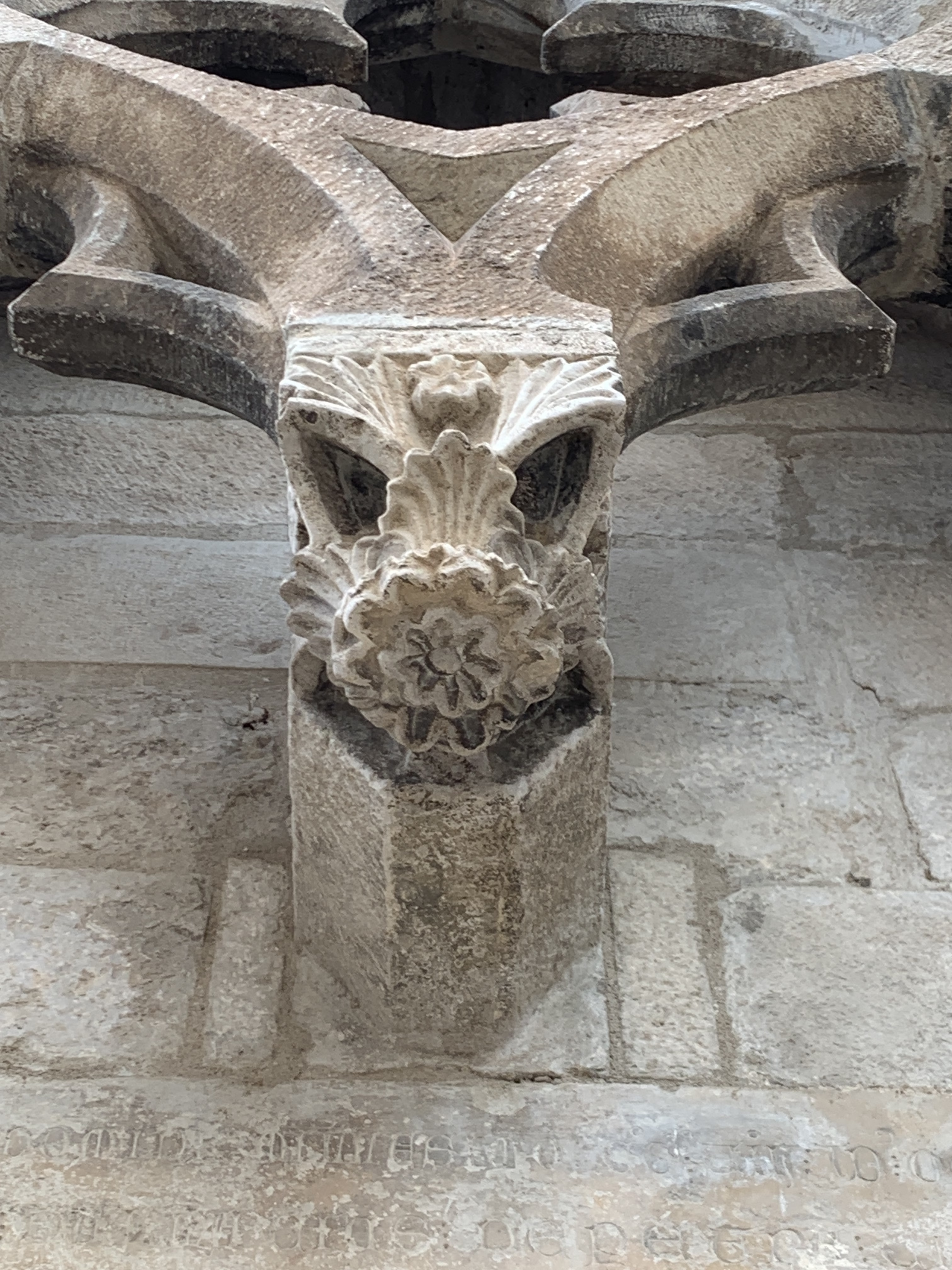
Still, Girona leaves an impression. The city is beautiful. As Game of Thrones fans, of course we can’t resist visiting the filming locations. Yes, we’re definitely not the first – but that doesn’t stop us from whispering a gleeful “Shame” at the foot of the cathedral steps 🙂
We see the Eiffel Bridge, a red iron structure designed by Gustave Eiffel shortly before he built his famous Parisian tower. For the occasion, it’s wrapped in yellow foil and adorned with flowers.
From here, there’s a lovely view of the colourful houses lining the Onyar River – yellow, ochre, brick red, stacked at uneven heights like a sketch along the water’s edge.

Later, we walk to the spot where the Onyar flows into the Ter. Outside the old town, things grow quieter. There are still plenty of people around, but the streets widen, the noise fades a little – and suddenly, you can breathe again. For a moment, we imagine living here. In one of the flats overlooking the water. With a studio by the river.
The next day takes us to L’Escala. We had planned to visit the weekly market and lose ourselves among local specialities – but instead, we find a flea market by the beach. Unfortunately, not the kind filled with hidden treasures, but more of a bazaar of cheap tourist goods. Still, it doesn’t dampen our mood – the sun is shining brightly.
We decide to spend the day at the beach. The bay of L’Escala opens in a gentle arc along the coast. We walk barefoot at the water’s edge and find it simply wonderful – the vastness of the sea. It’s enough just to be, with no plans, no to-do lists.
During our walk we come across a statue of the Little Prince, sitting on a low stone wall, gazing out over the horizon. I’ve always loved the book. Maybe it’s time to read it again.
But what, I wonder, is the protagonist of a French author doing here in Spain?
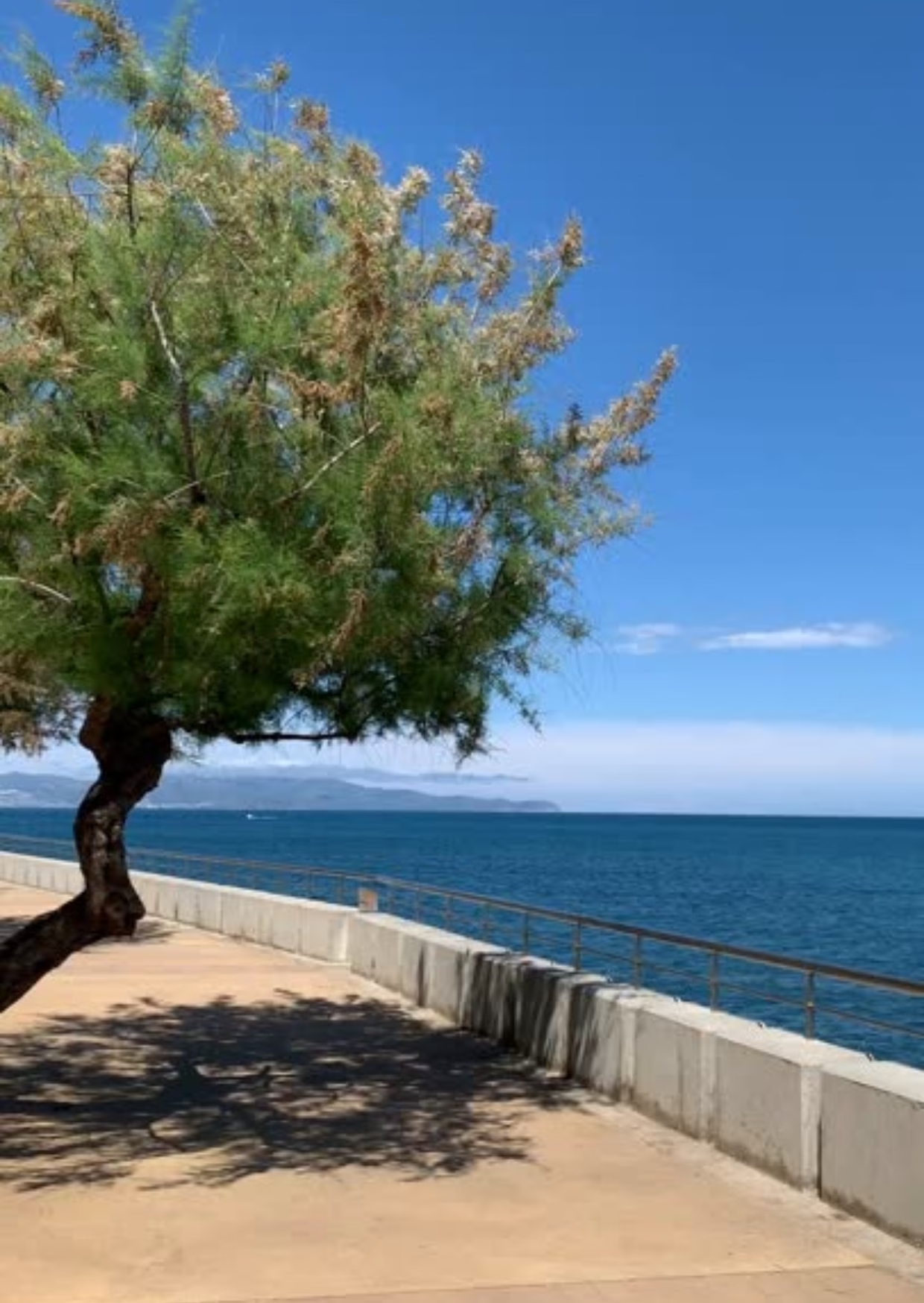
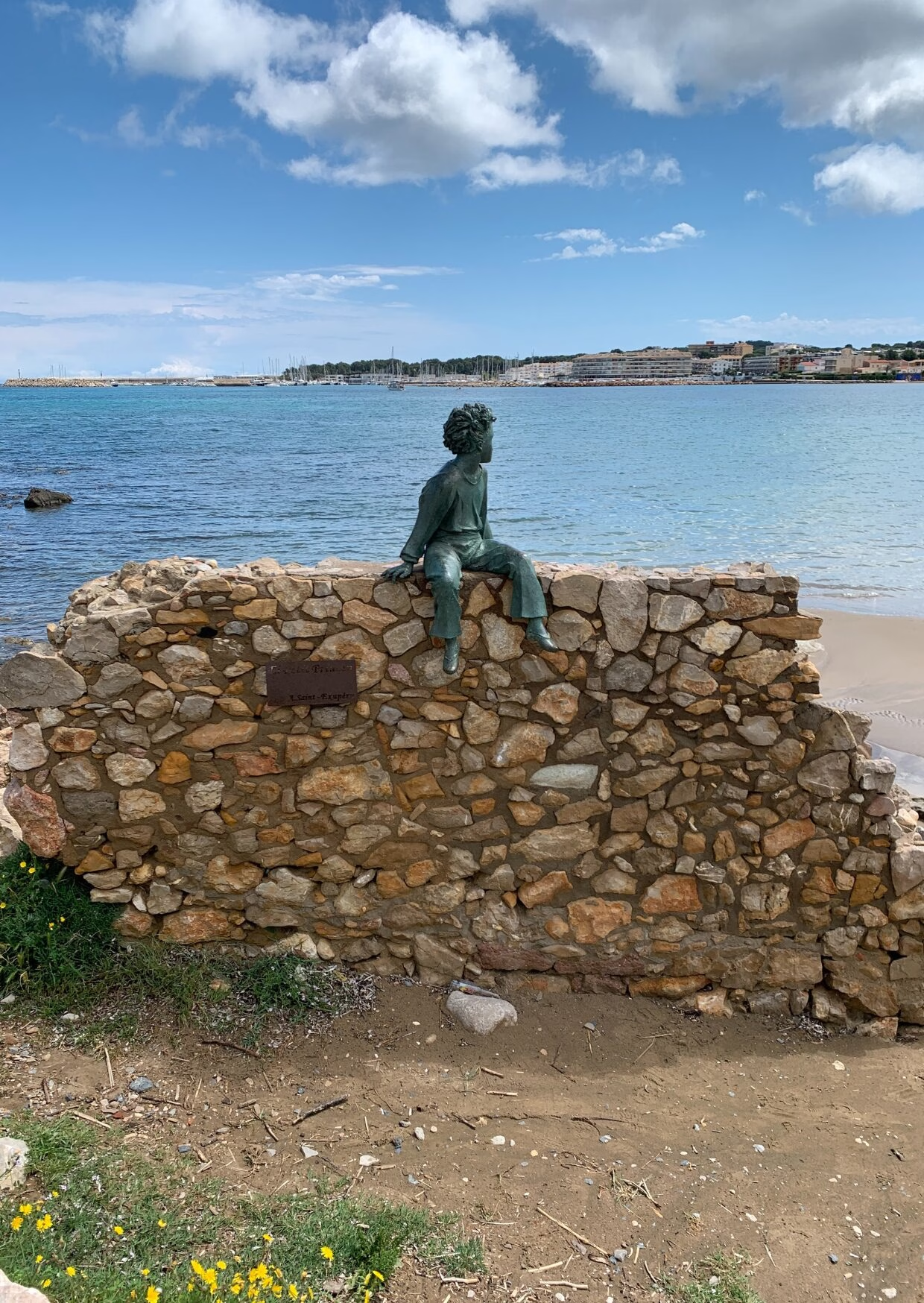

I want to know what it’s all about:
Antoine de Saint-Exupéry wasn’t just a writer – he was also a pilot, as we know from The Little Prince. During the Second World War, he flew reconnaissance missions. On 31 July 1944, he took off from Corsica for a flight over southern France. He never returned. No radio contact, no crash report – just silence.
Some fishermen from L’Escala claimed to have seen him in the sky shortly before he disappeared. It’s not confirmed, but given his flight path, it wouldn’t have been impossible as a final sighting.
Saint-Exupéry’s disappearance remained a mystery for decades. In the 1970s, a fisherman found a bracelet bearing his name near Riou, a small island south of Marseille. In 1998, wreckage of an aircraft was discovered nearby, which in 2000 could be confirmed as Saint-Exupéry’s plane.
The statue of the Little Prince is said to commemorate his last possible sighting. It’s part of the Passeig del Petit Príncep – a coastal walking route dedicated to Saint-Exupéry’s work. Along the way, several figures from The Little Prince have been placed into the landscape – the fox, the rose, the snake.
We only spotted the Little Prince himself. The others must have escaped us – just one of many reasons to come back someday.
Over the next few days, we explore hidden coves nestled between rocky cliffs – places you can only reach by narrow paths or from the water.
In some of these coves, we are completely alone. No voices, no engines – just the sound of waves and the occasional cry of a bird. We sit on smooth rocks with our feet in the water.
I could stay here forever.
On other days, we enjoy the vastness of the long, sweeping beaches where the view stretches all the way to the horizon. I absorb the surrounding colours. Green isn’t just green – it shifts with the light into blue or yellow tones. Even the grey of the rocks has a life of its own.

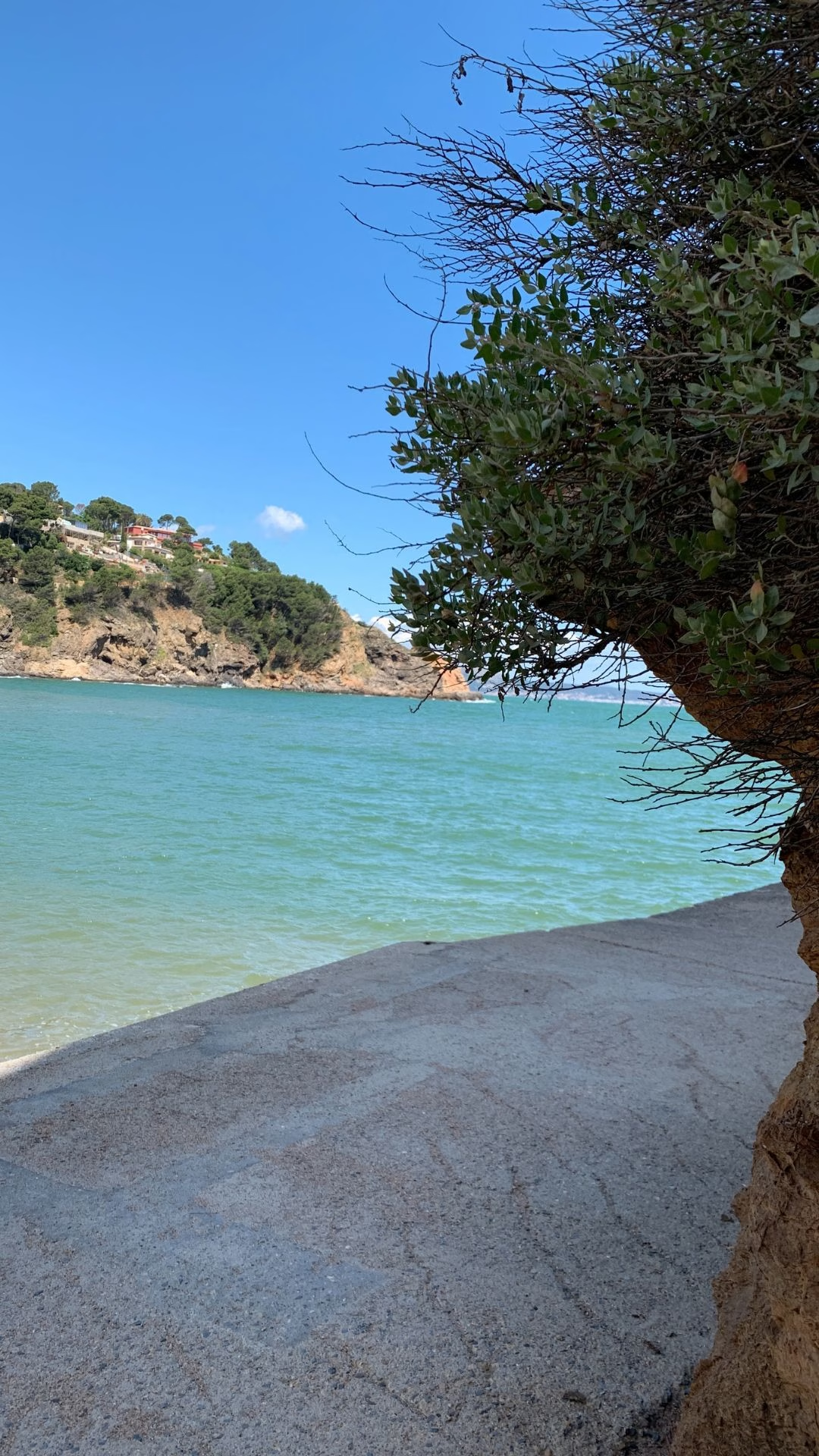
And just like the colours, like the light, the voice of the sea keeps changing. At times it’s a gentle lapping; then again a wild, untamed roar. My lips taste of salt, the air smells of pine – or, in the narrow streets, as we pass by, of roasted garlic. The Costa Brava speaks to all my senses.
I can feel my rhythm slowing the moment my gaze opens into the distance. Little by little, a sense of rest settles in. The far line of the horizon and the primal calm between rock and sea begin to stir new images within me.

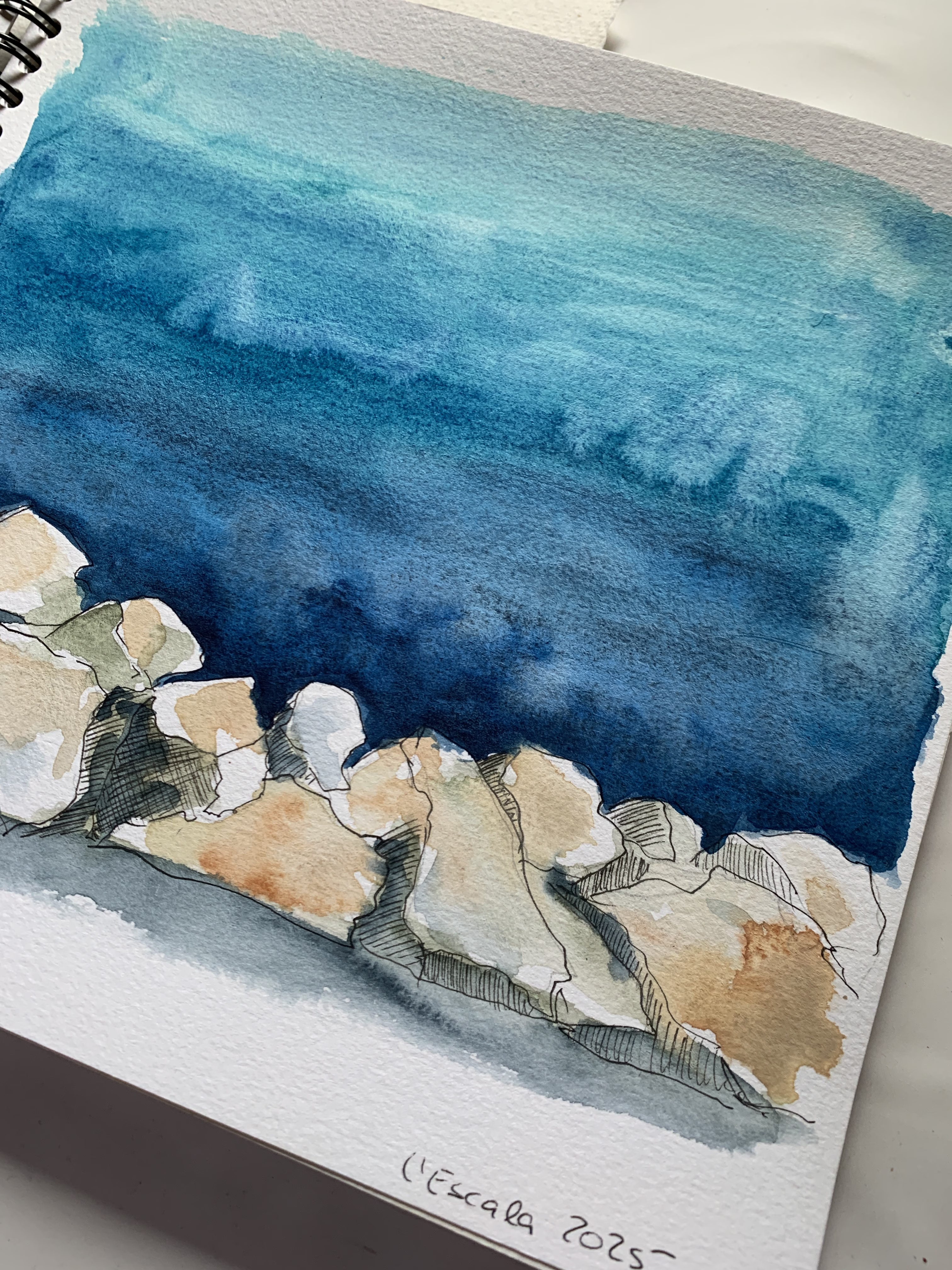
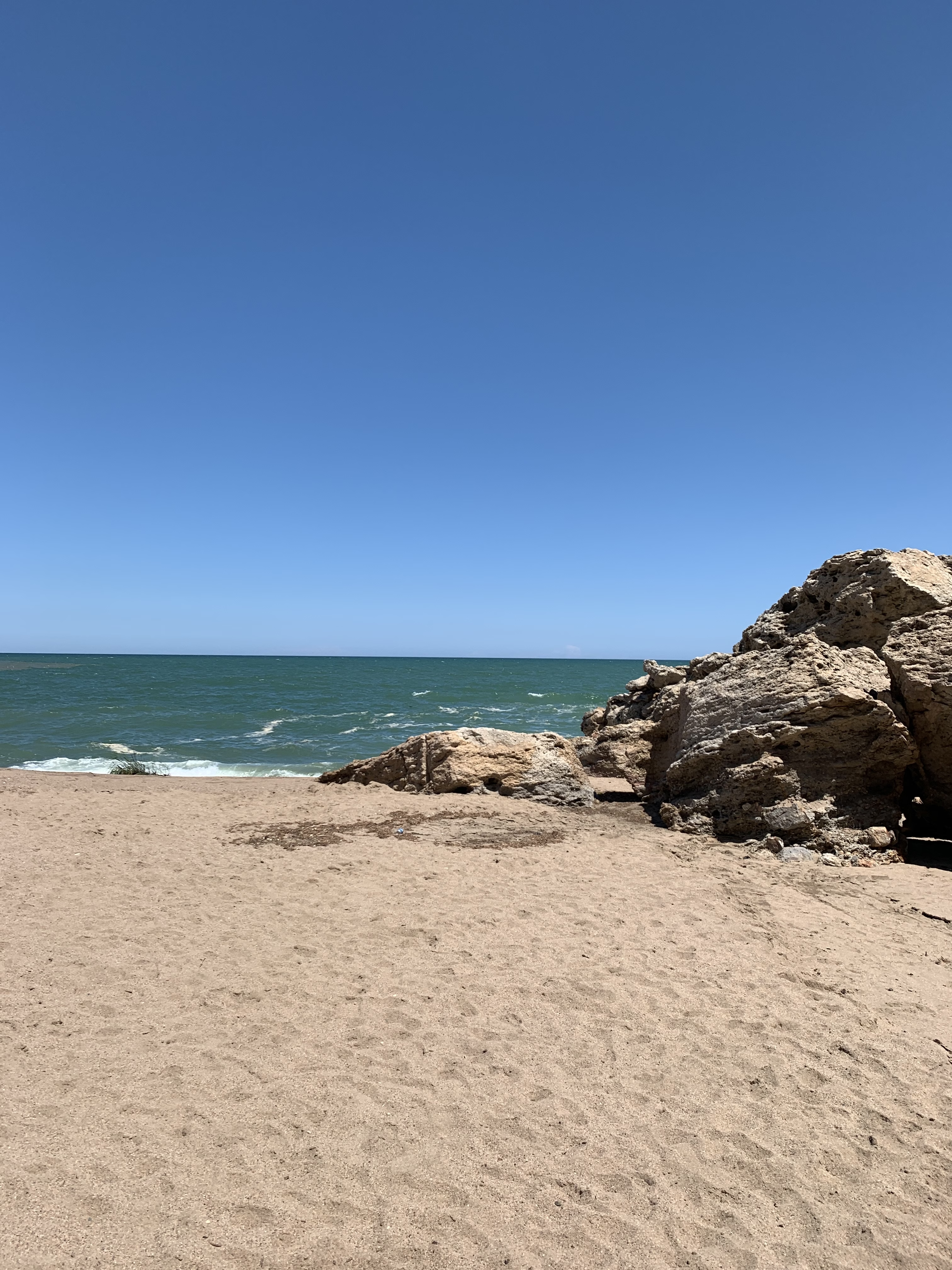
We arrive in Cadaqués by sea.
For a long time, this small village was hardly accessible any other way. It lies tucked into the hills, a scattering of white houses crowned by an old church, with the turquoise sea gleaming all around. As soon as we set foot on land, we wander through narrow alleys lined with old cobblestones. Our path leads us up to the church square. From up here, there’s a breathtaking view across the red-tiled rooftops all the way down to the bay.
As if the view weren’t enough, someone now settles into a corner of the wall and begins gently strumming a guitar. Just a few notes – and they fill the square. A special moment.
We continue to stroll. All around us, on walls and in small alcoves, we spot pieces of art. In my sketchbook, I capture passing impressions: the light as it breaks on the waves, a shadow cast on a wall, the pattern of an old window frame. Cadaqués leaves its mark – maybe some of it will find its way into my paintings one day. Maybe not.
But I know I’m taking it with me.
For a long time, Cadaqués has been a refuge for artists. Not only for the inescapable Salvador Dalí – whom we consciously avoid, due to his ties to authoritarian regimes, his violent fantasies, and his misogyny – but for many others, like Marcel Duchamp, Pablo Picasso and André Breton. Perhaps they came for the light. Perhaps for the seclusion.
Or perhaps because this place, with its narrow lanes, whitewashed walls and rugged cliffs, has a kind of defiant spirit – one that refuses to make itself neat for the world.
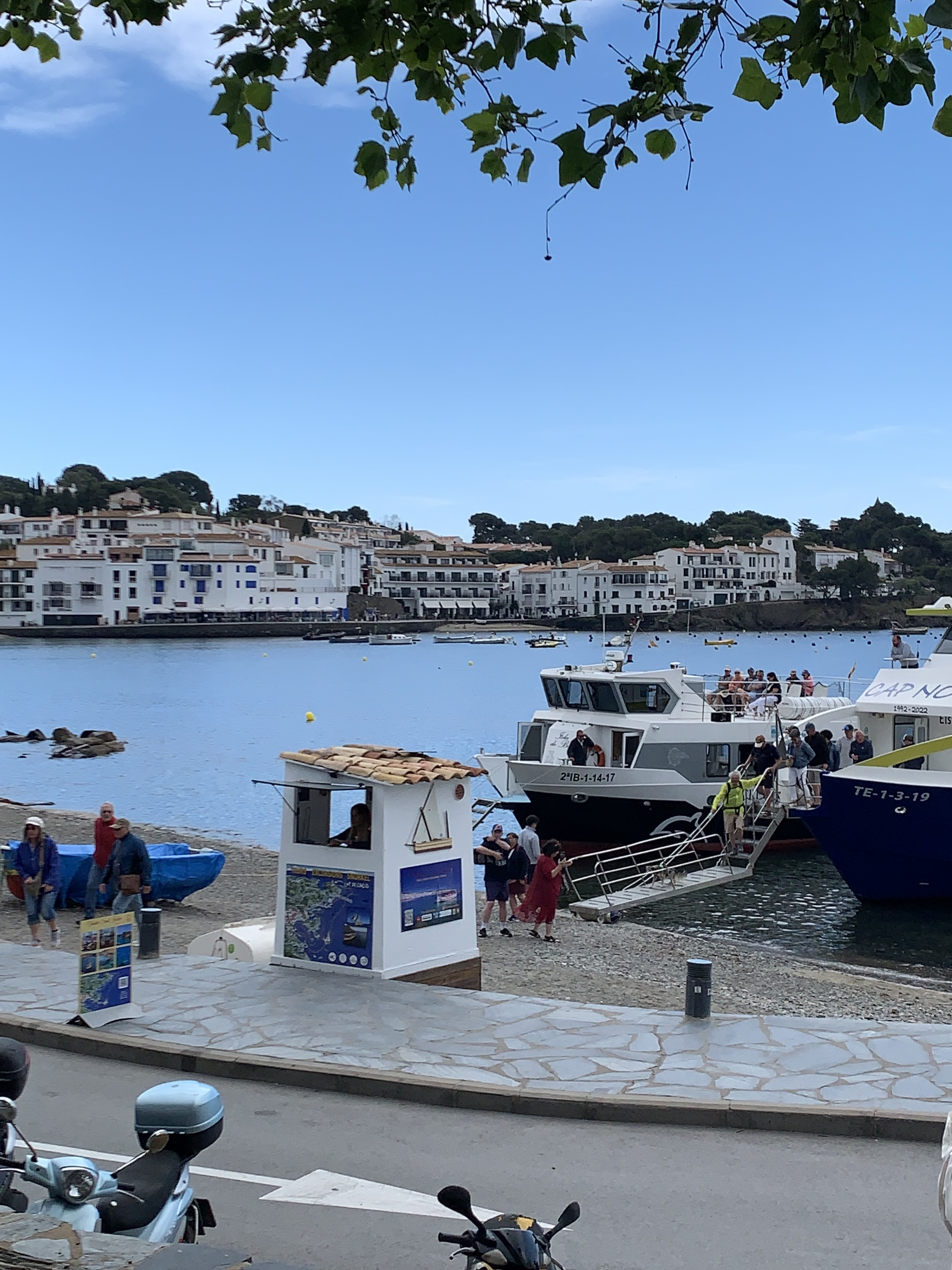
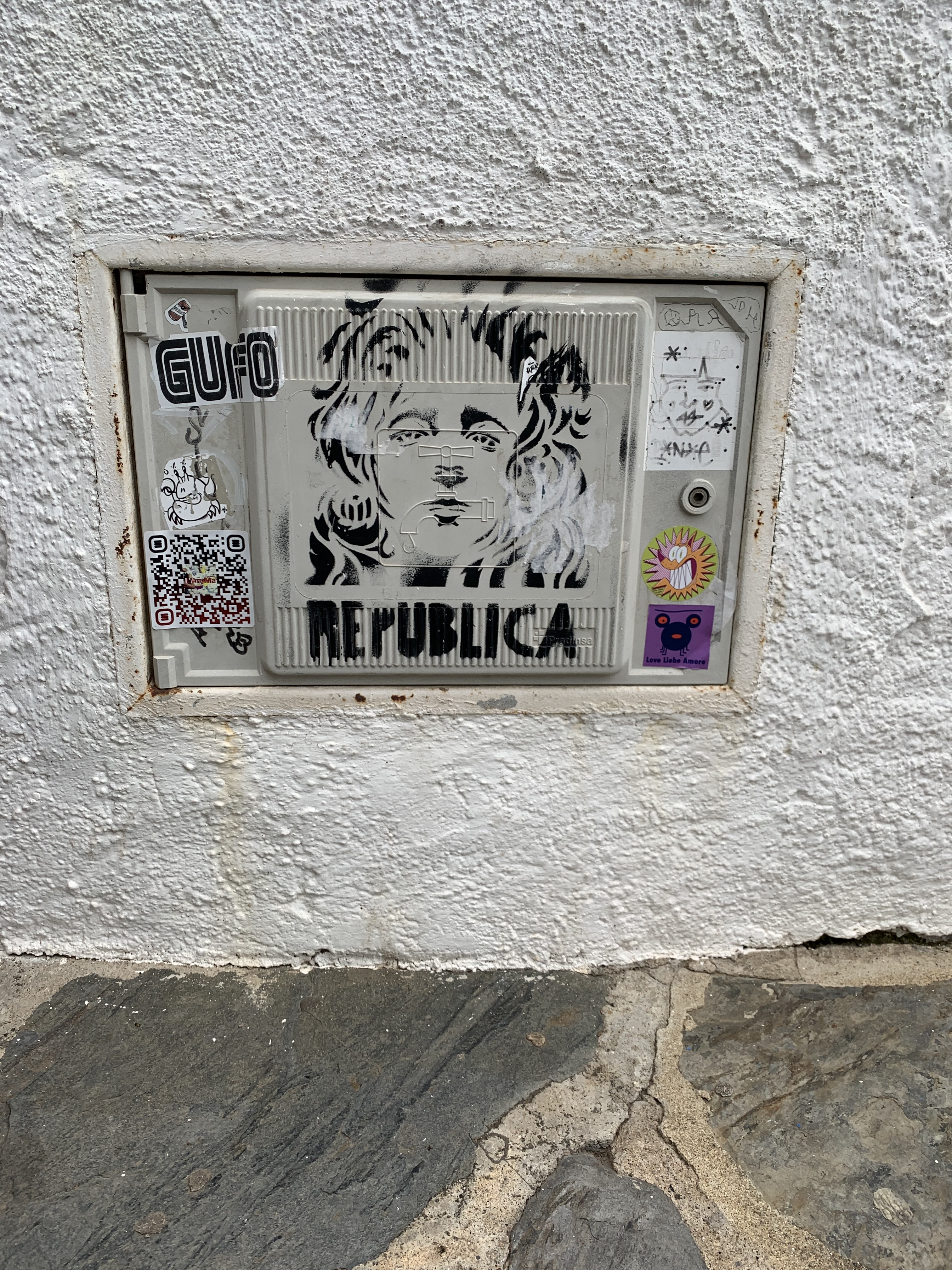
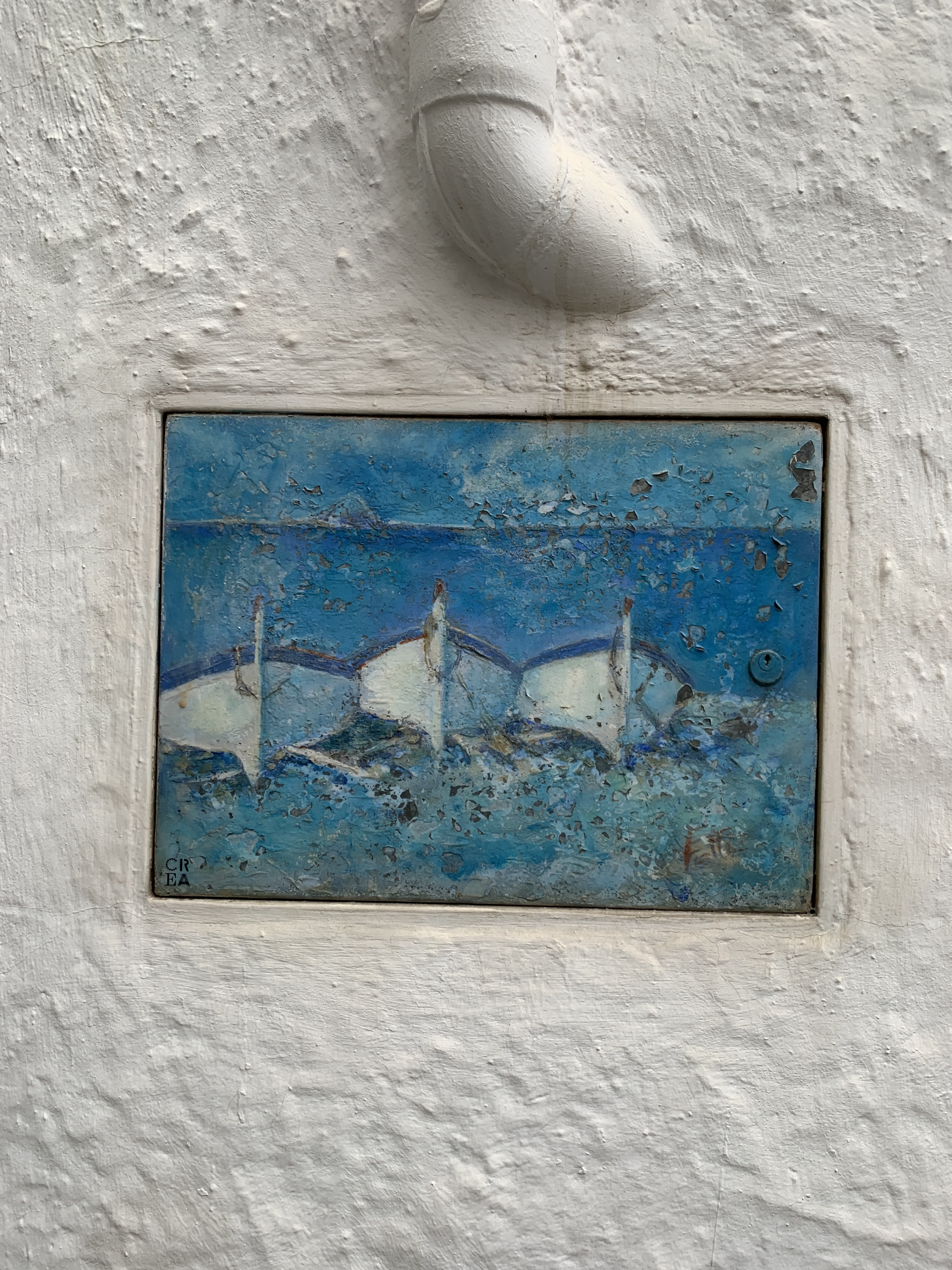
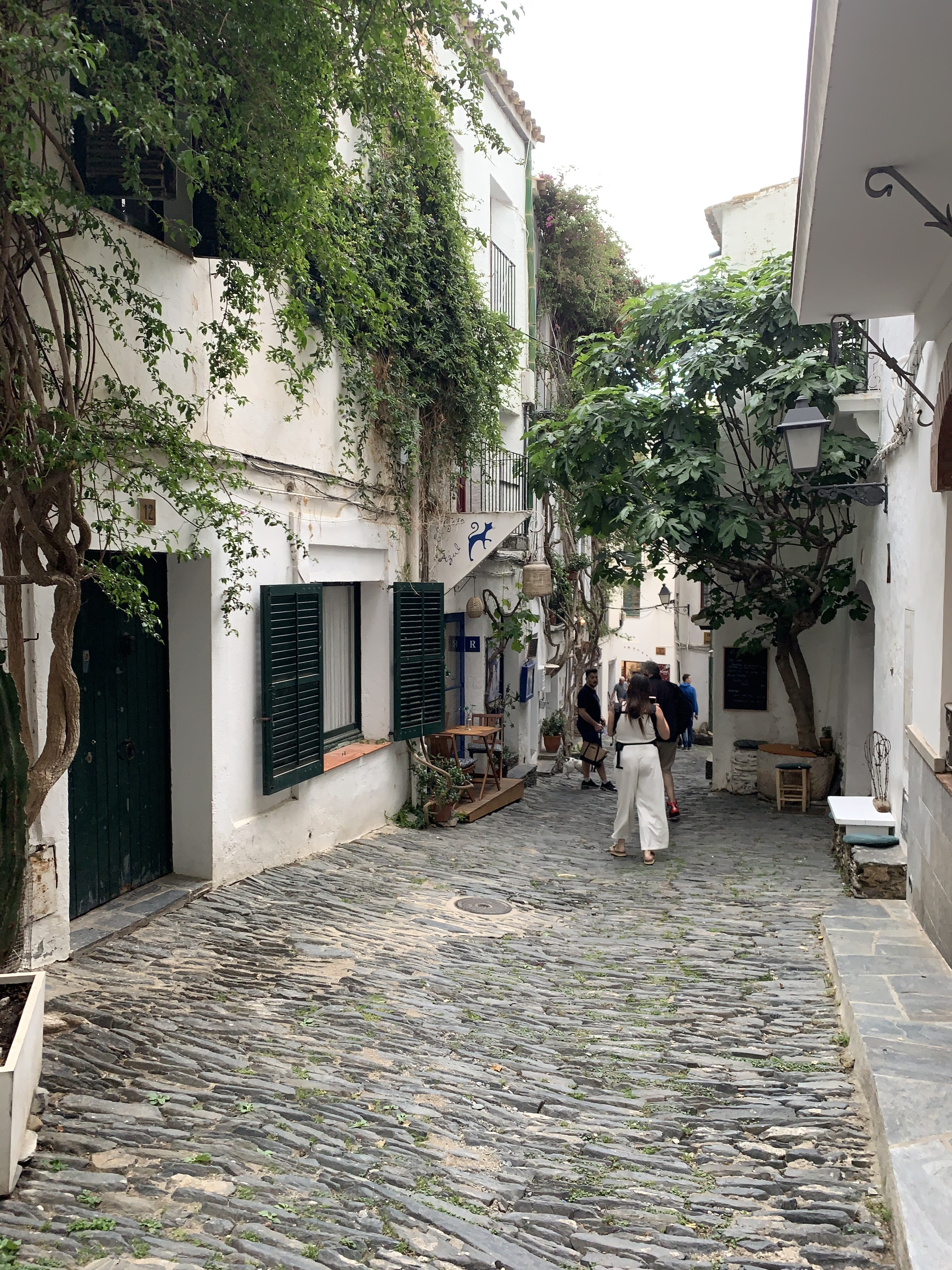
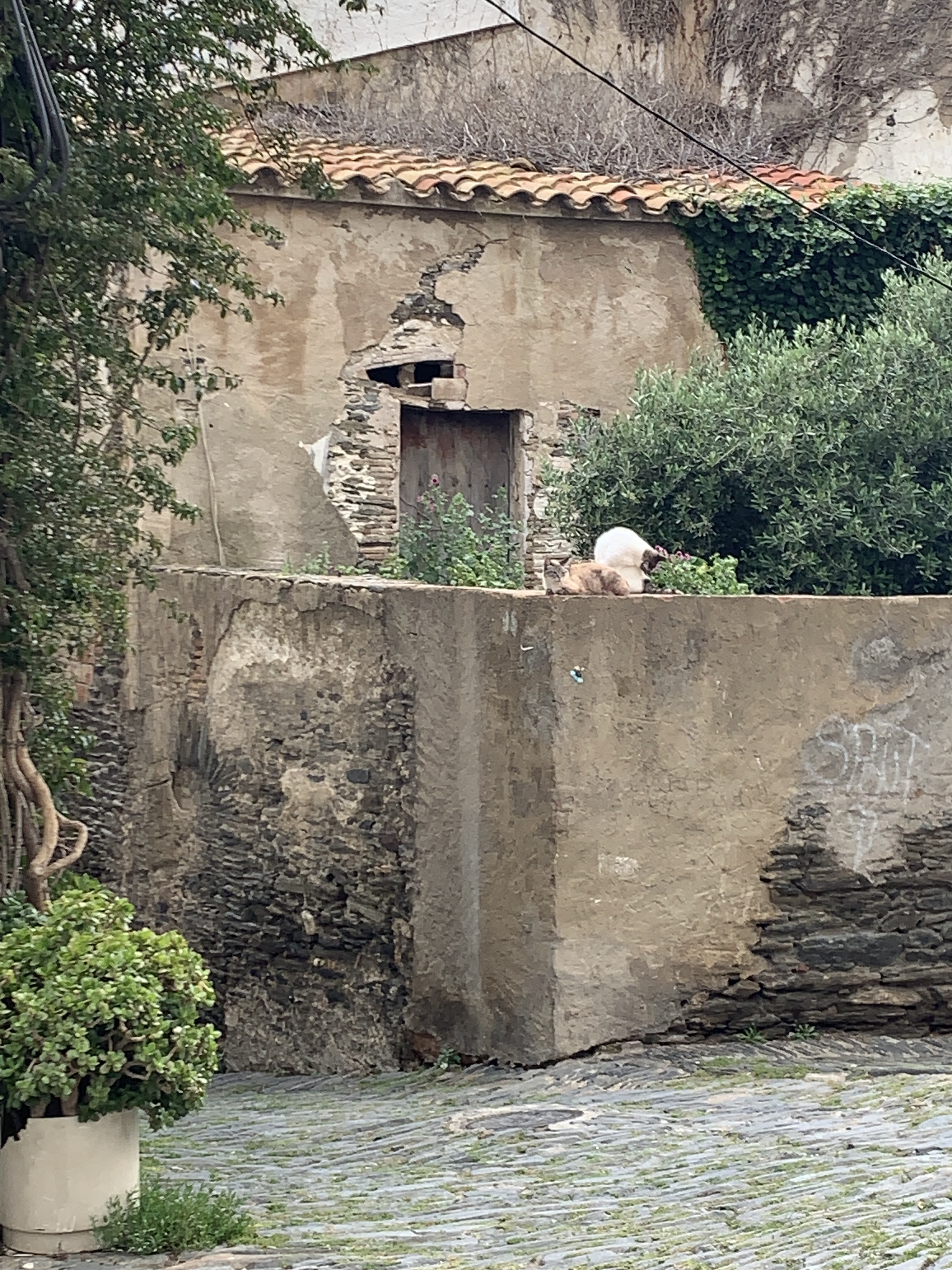
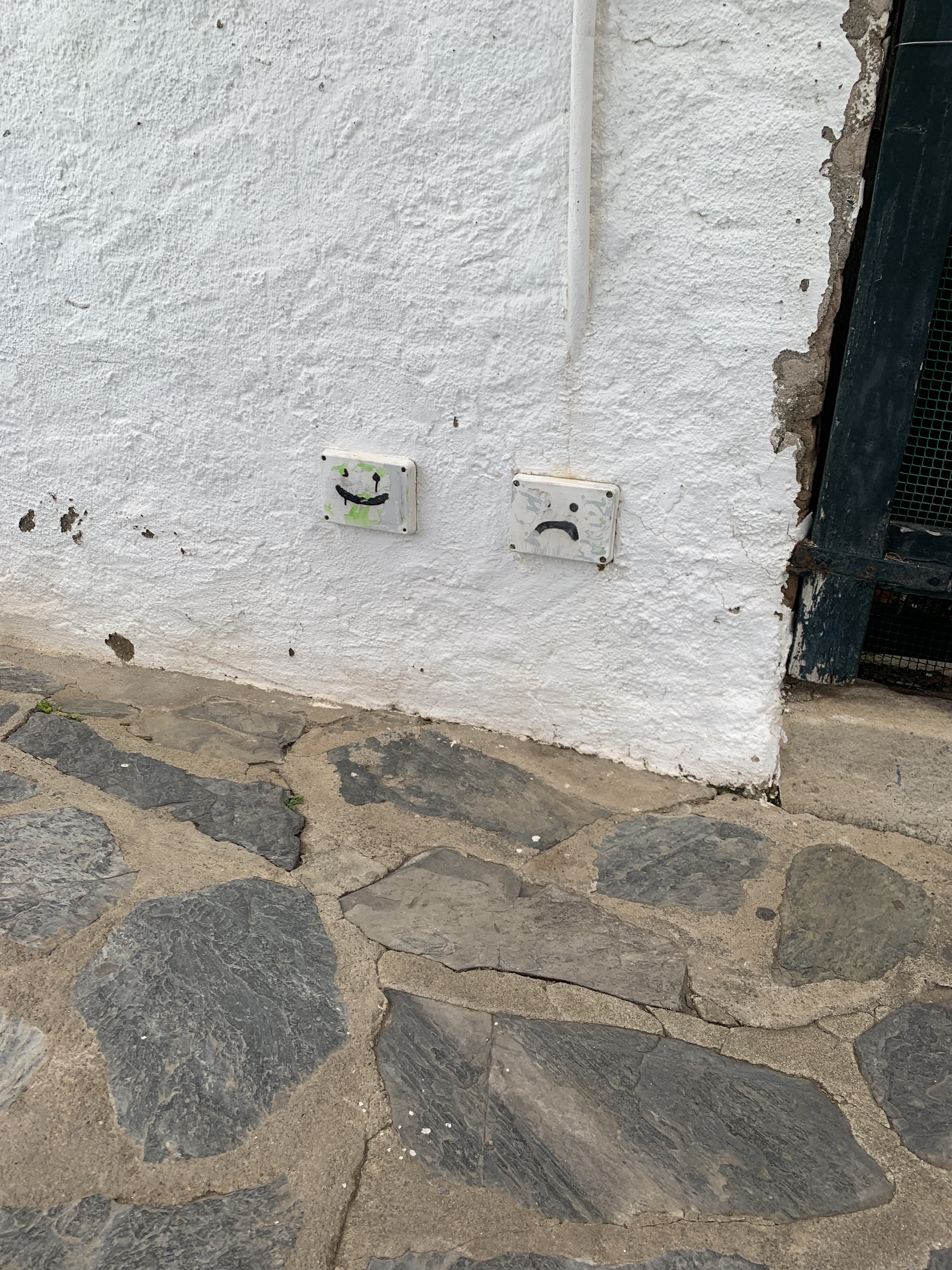
Sadly, even this journey must come to an end. But we make the most of our final day: the sun is shining, and we spend the morning at Cala d’Aiguablava.
Cala d’Aiguablava literally means “the bay of light blue water.”
The crescent-shaped cove is sheltered and relatively shallow. Sunlight filters through the clear water and reflects off the fine, pale sand beneath – making the sea itself seem to glow.
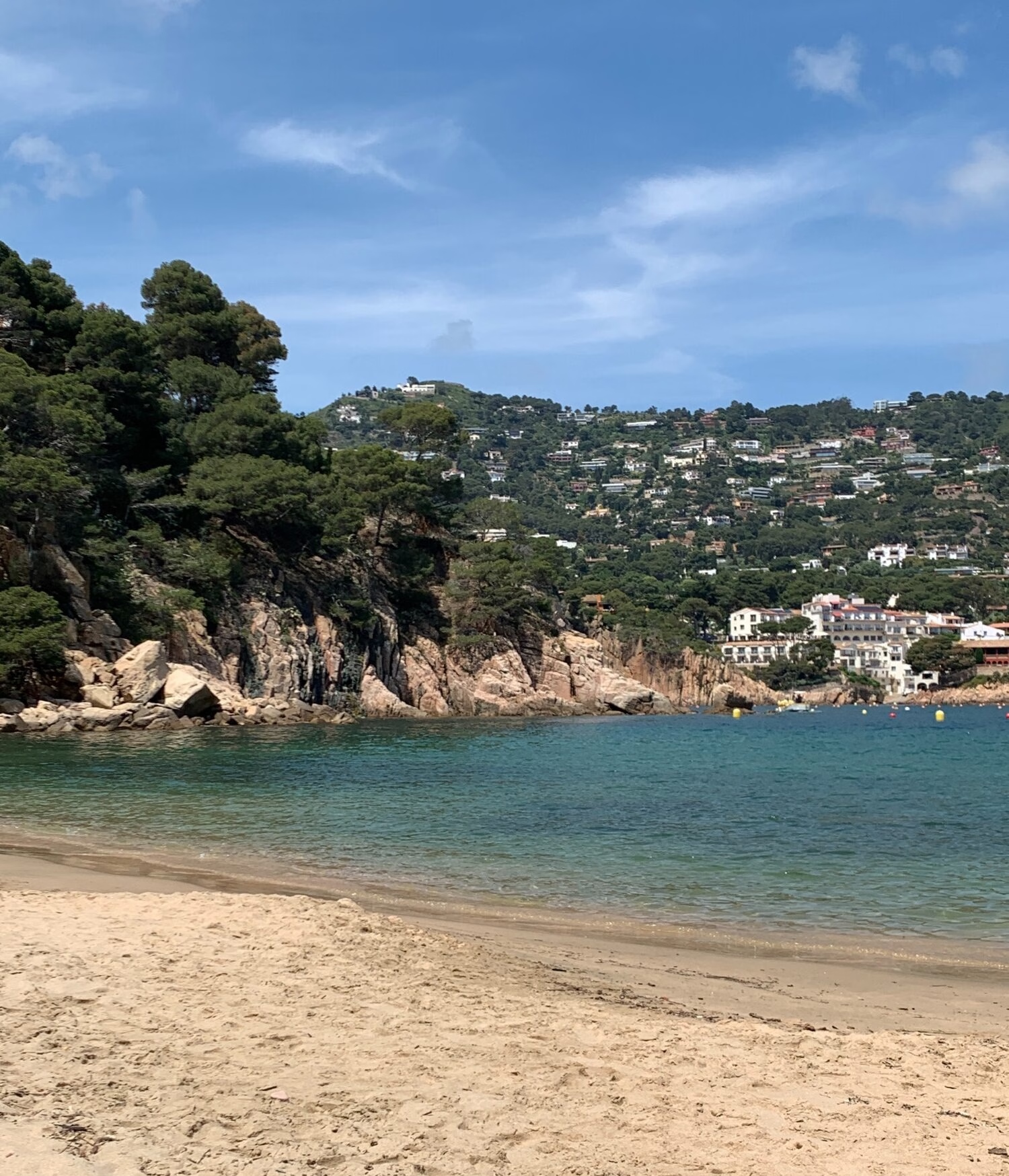
In the afternoon, we head to Calella de Palafrugell. Here, the gleaming white village presses so close to the small coves that the waves almost lap at the café terraces. A few older men sit in the shade among brightly painted fishing boats pulled ashore, chatting in Catalan.
The scene feels almost unreal – a living picture book in blue, white and ochre. With the sea in view, we enjoy our last ice cream in Spain. In a small boutique, I buy a beautiful scarf that will always remind me of this trip. And then it’s time. We still need to pack our suitcases. Our flight leaves early the next morning.
But after dinner, just in time for sunset, we return once more to Platja de Pals to say goodbye to the Mediterranean.
Turquoise water, pale rocks, green pines – this is one of those rare places in the world where the postcards don’t lie.
The Costa Brava has long been a muse for creative minds. In the 1930s, Marc Chagall, for instance, spoke of a “blue paradise” after spending time in Tossa de Mar. Dora Maar also stayed there for a while. She was captivated by the atmosphere of the place, photographing the daily life of the fishermen and the town’s architecture. Truman Capote spent time near Palamós, where he wrote parts of In Cold Blood.
Many artists, painters and writers have drawn inspiration from the region’s wild coves, its dazzling light, and the primal character of its culture. Traces of their creativity can be found all along the Costa Brava.
Now that I’m back in my studio, they accompany me.
The generosity of space, the intensity of colour, the sun-drenched afternoons – they, too, will find their way into my paintings. Perhaps not in any visible form, but quietly present, nonetheless.
Join the newsletter now
and not miss a thing
Get exclusive insights into my creative processes, learn the stories behind my artwork
and receive invitations to my exhibitions and events.
To say thank you, I'll give you 10% off your first purchase.